This article was a collaborative article written by Bitmovin & Teleport Media | Authors: Andrei Klimenko, CEO, Teleport Media & Joshua Shulman, Content Marketer, Bitmovin
Streamed content is the future of video viewing. With that in mind, the quality of the video content and the viewers’ quality of experience (QoE) become key success factors for an OTT service to maintain and grow a loyal audience.
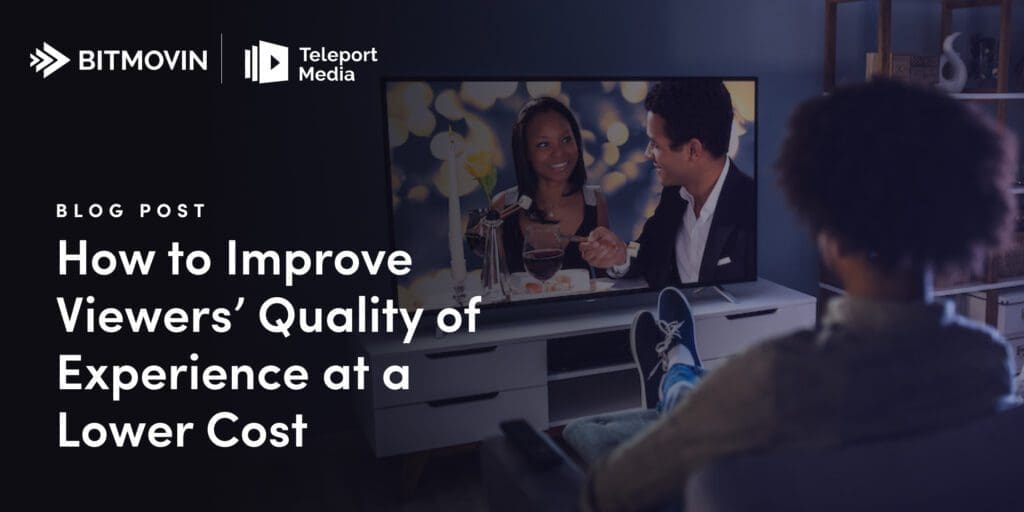
As of late, there’s been a major industry-wide shift towards reducing the cost of operations – especially as a result of the COVID-19 pandemic. However, with more consumers at home, there is also a much larger demand for improved viewer experience. This was reflected in Bitmovin’s latest video developer report, which identified controlling costs as the #1 challenge and viewer engagement (experience) as the #2 opportunity for innovation.
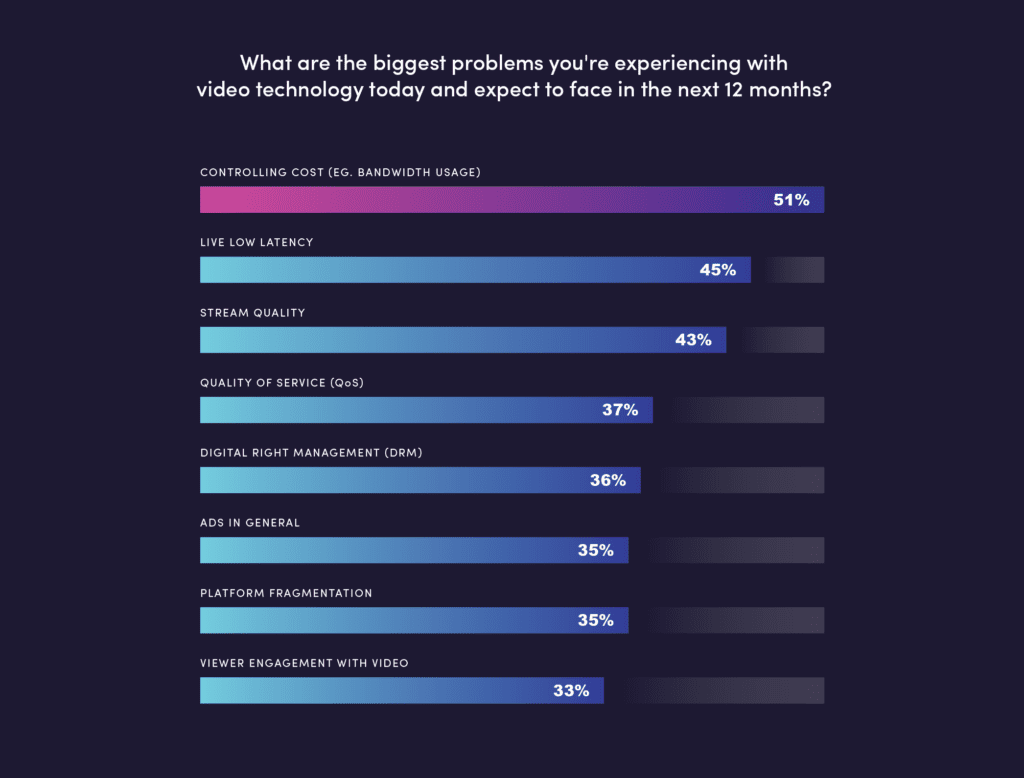
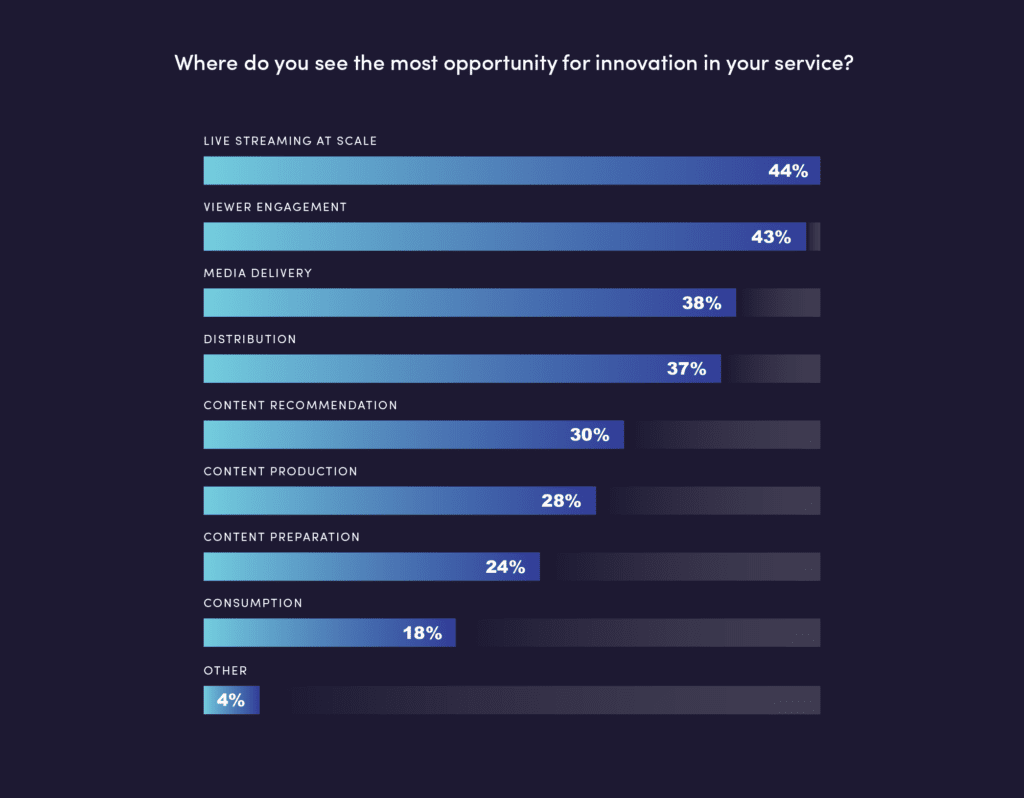
The Broadcast Decision-Makers’ QoE Dilemma
The reality is that the adoption of any range of products and tools for video developers aimed at upgrading stream quality while improving bitrate expenditure can quickly lead to rising costs in your OTT workflows. As a decision-maker, you’re faced with the ultimate dilemma: How can I maintain the maximum quality of experience (QoE) without breaking the bank to build a successful OTT service?
What if there’s a way to have your cake and eat it too? Bitmovin and Teleport Media work hand-in-hand within the most complex and expensive part of your OTT supply chain (outside of content production) – during the storage and delivery phase. Our respective teams of video experts work every day to develop and improve software solutions that help to maximize your audience reach, improve the visual quality, and to achieve maximum cost-efficiency.
In this article, we explain how to avoid broadcaster decision-makers’ dilemma by displaying how to implement next-gen video optimization solutions that reduce time to market, improve video quality, and prevent negative effects from video consumption spikes; thus gaining you more happy users, all while cutting costs on storage and delivery.
Key drivers of video streaming costs outside content production
Video files often vary significantly in size based on two major factors, quality, and length, and most OTT services offer a variety of different types of content from short-form animations to long-form live-action films. Regardless of the type of content that an OTT service chooses to deliver to its consumer base, one of the most important things to consider for a budget is the amount of storage that the organization will need to run its business effectively and efficiently.
The storage necessary to maintain a content library will always be multiplied against the number of viewers that a given Content Delivery Network (CDN) will distribute – naturally, higher resolution files will rack up a significant storage cost. Without proper management of a content library, an organization will quickly spend it’s full CDN bandwidth, thus limiting how many concurrent viewers can use your platform or service at a given moment.
This is most dangerous during unexpected traffic spikes for things viral content that will expend a pre-paid CDN plan (especially in scenarios where in-house CDN resources or multi-CDN strategies are limited), resulting in a costly purchase of additional impressions. A common market solution is to reduce the visual quality of the content, resulting in a much lower Quality of Experience (QoE) for the audience. Although cost-effective, visual quality reduction is one of the top reasons that your audience-base will churn in search of a higher QoE. Failing to reduce the size of your content will cause additional QoE issues like playback failures (slower start-up time, loading errors, buffering) or rebuffering.
In short, there are five main drivers of video streaming that can affect the total cost of operations (TCO):
- File size
- Storage capacity
- CDN price
- Visual quality/bitrates
- Audience size
The ultimate challenge is how to address the first four drivers without losing customers and without massively increasing an OTT budget that could be reserved for content production and marketing efforts. This is where the true winning broadcasters can thrive – those that find and implement solutions that can redefine the viewer experience with low latency streaming, all while reducing their total cost of operations (TCO). Although generally interchangeable between organizations of all sizes, established platforms and services should seek to optimize their operations with an efficient and flexible video infrastructure; whereas new OTTs and broadcasters must focus on reducing their time-to-market and providing as high-quality content on as many devices as possible.
Bitmovin’s Adaptive Video Player, ML-enabled Cloud Encoding, and Video Analytic solutions paired with Teleport Media’s decentralized CDN deliver a unique workflow that reduces time-to-market and TCO, all while maintaining (if not improving) QoE.
Efficiently compressing content for QoE with Bitmovin
One of the most efficient methods any OTT organization can optimize their operations is with cloud-based per-title encoding. Per-title encoding is the method of customizing the bitrate ladder of individual videos based on the complexity of the content therein. The penultimate goal of any per title-based encode is to algorithmically select the optimal bitrate with a pre-defined codec that will deliver a perfect viewing experience without overspending on data delivery or storage.
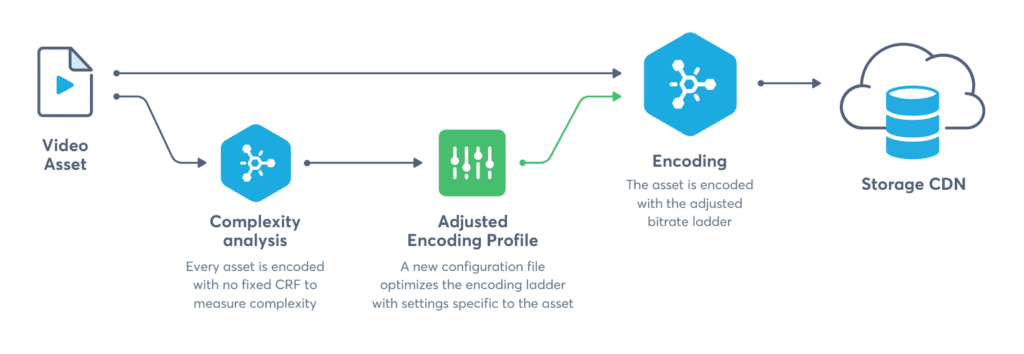
This type of encoding is most ideal for larger content libraries or those with varying types of content by stripping away anything that’s beyond the human’s visual perception. To test which bitrate ladder is optimal for each piece of content, it’s recommended to use quality metrics like PSNR or SSIM. There are systems in place that use machine learning to automatically select the ideal bitrate, otherwise known as an Adaptive Bitrate Ladder (ABR).
Alternatively – OTT services and broadcasters can opt towards multi-pass encoding techniques, which, as the name suggests, “simply” encode video files multiple times in the least lossy way possible. Although not as efficient as per-title encoding, multi-pass encoding offers the benefit of compression at scale and in bulk. Both options are great for optimizing your video workflows towards faster times to market and maintaining quality, but per-title encoding is better at over-all efficiency, whereas multi-pass is best suited for speed.
Once a video content library is compressed, a provider must find a way to efficiently deliver their content.
Decentralized video delivery with Teleport Media
The next step to delivering high-quality content at scale is selecting a delivery method with a CDN provider. And much like top compression techniques, CDNs with efficiency, quality, and cost in mind are shifting to cloud-based architectures with decentralized delivery solutions. Based on the WebRTC technology, that has become a default feature of any modern internet-connected device, decentralized solutions like Teleport Media’s adaptive and secure peer-to-peer delivery system enables viewers’ devices to restream content between one another.
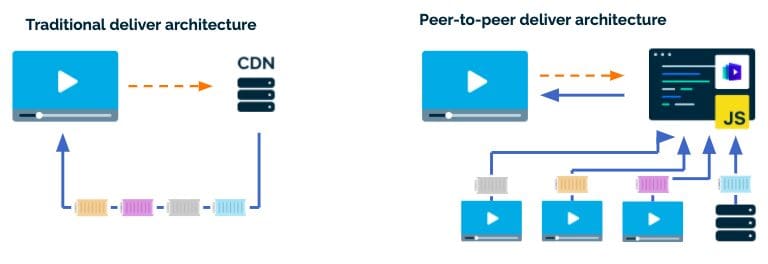
This method reduces delivery costs by vastly reducing the amount of traffic that actually flows from CDNs to viewers. The player-side P2P CDN architecture is protected from pirates and restreaming and is fully DRM compliant. Unlike a traditional CDN, the P2P content delivery network doesn’t contain any servers that create a bottleneck when the video has to be delivered at scale. It operates as a video player plug-in that takes the duty of traffic delivery from many sources simultaneously – both other viewers’ devices and the origin CDN. Teleport Media JS is compatible with a wide range of HTML5 video players, like Bitmovin’s player, and is designed for HTTP adaptive streaming. The P2P CDN works effectively in browser and mobile applications, on Live and VoD content.
Using Teleport Media with in-house and 3-party CDN
As traffic varies significantly throughout the day for almost any OTT video provider, it can be difficult to efficiently manage content delivery, especially during surges.

Teleport Media’s decentralized architecture is capable of leveraging the in-house CDN and making it serve 5-times more audience with the same amount of servers and bandwidth. It also decreases the overall costs of delivery, making the need for 3-party CDNs nearly vanish. When an OTT provider doesn’t own in-house CDN and uses delivery services from CDN vendors starting from the first byte of data, Teleport Media saves the budget up to 40% by providing much lower traffic delivery costs with the premium quality.

How decentralized CDN architecture lowers rebuffering
Rebuffering serves as a good indicator of troubles on in-house or external CDN. The more the audience, the less bandwidth per one viewer, the higher the chances of rebuffering.
Teleport Media provides each viewer with multiple connections to other peers and constantly measures their quality. If for any reason P2P connections slow down and put the video player at the risk of rebuffering, the viewer is switched to origin CDN until restoring full buffer.
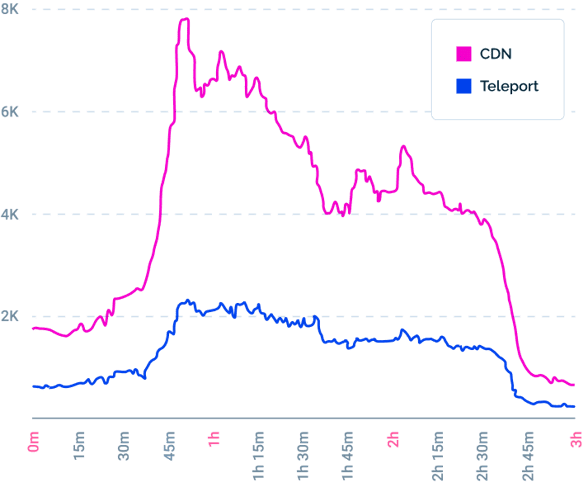
Cost-Efficient End-to-End Content Delivery with Bitmovin and Teleport Media
The combination of Bitmovin’s per-title (or multi-pass) encoding solutions and Teleport Media’s decentralized CDN architecture are guaranteed to yield the optimal viewer QoE while reducing the cost operations without having to compromise the content’s resolution or disrupting an existing video infrastructure. The adaptively and least lossy compressed content will be delivered to nearly every user on every device. By combining Bitmovin’s and Teleport Media’s solutions you’ll get:
- Higher-quality content at lower bitrates (even for users in regions with low bandwidth capacity)
- Lower storage volume with compressed & re-streamed content using adaptive bitrate ladder renditions
- Top-quality playback during traffic spikes of any capacity
This was most recently displayed by Russian VoD Service, Okko.TV that was able to scale their content delivery to support 4K and UHD content across a wide span of devices. To further lower the complexity of implementation, Bitmovin recently adopted a direct plug-in to it’s HTML5 web-player.
If you’d like to further discuss how to improve visual quality while cutting storage and delivery costs, do reach out:



